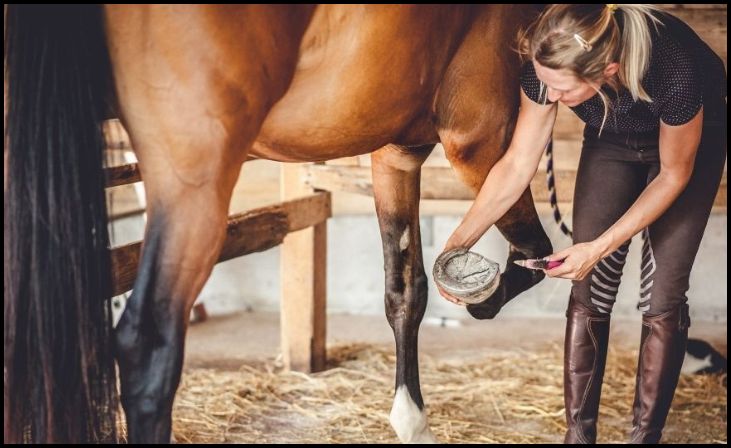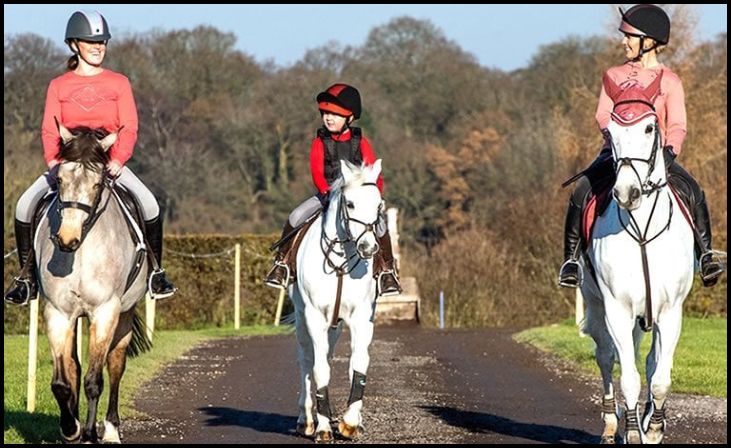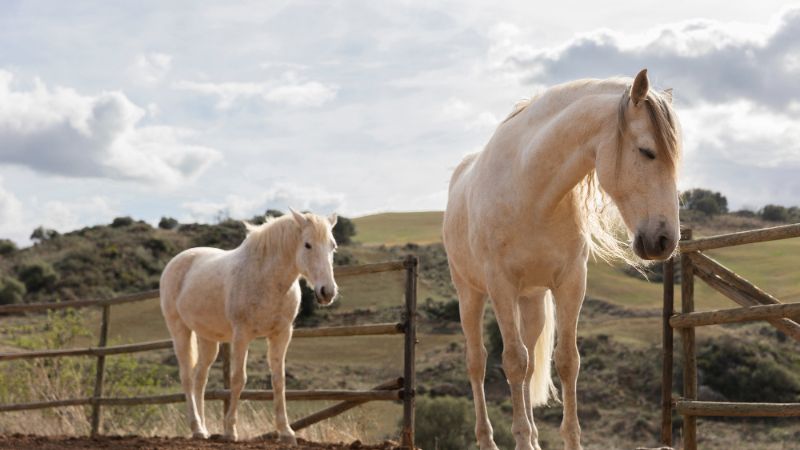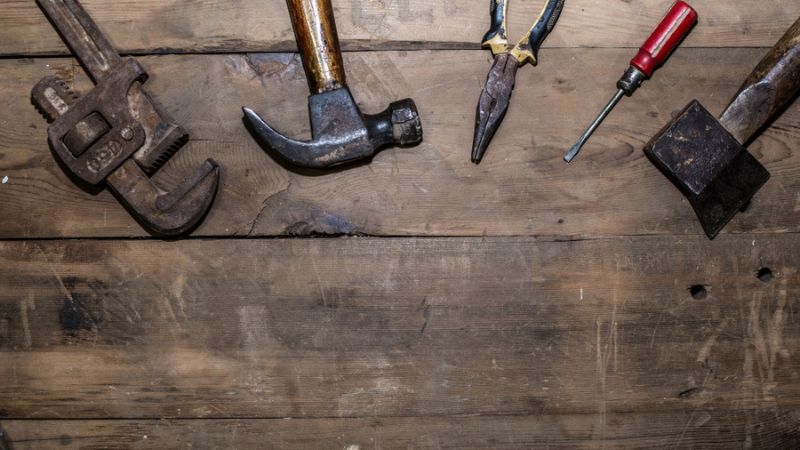In the exhilarating world of cutting horse riding, safety should always remain a top priority. Whether you’re a seasoned competitor or a beginner enthusiast, understanding and implementing essential safety precautions are paramount to ensuring a secure and enjoyable experience for both rider and horse.
In this blog, we’ll explore ten indispensable safety measures tailored specifically for cutting horse riders and handlers. From proper equipment and attire to effective communication and risk awareness, these precautions cover every aspect of riding and handling a cutting horse with confidence and caution. By adhering to these safety guidelines, riders can minimize the risk of accidents, injuries, and mishaps, allowing them to focus on honing their skills and achieving success in the thrilling sport of cutting. So saddle up, and let’s delve into the essential safety precautions that every cutting horse rider should know.
Safety Precautions for Cutting Horse Riders
Proper Equipment and Attire

Ensuring both rider and horse are equipped with appropriate gear is essential for safety during cutting activities. A well-fitting helmet protects the rider’s head, reducing the risk of head injuries in case of falls or collisions. Sturdy riding boots with heels provide stability in the stirrups, preventing the foot from slipping through during sudden movements. Gloves offer a better grip on the reins, enhancing control and communication between rider and horse. Moreover, suitable attire, such as long pants and shirts with sleeves, shields against scrapes and abrasions from brush or branches encountered during riding. Additionally, inspecting the horse’s tack, including the saddle, bridle, and protective boots, ensures they are in good condition and properly fitted, preventing discomfort or injury during riding sessions.
Also Read – How To Teach a Cutting Horse To Work Cattle
Warm-Up and Stretching
Engaging in warm-up exercises and stretching routines before mounting the horse is crucial to prepare the body for the physical demands of cutting. These activities serve to increase blood flow to the muscles, raising their temperature and making them more pliable, which reduces the risk of strains and injuries during intense riding sessions. Concentrating on stretching the lower back, hips, thighs, and calf muscles enhances flexibility and mobility in the saddle, enabling better performance and comfort during maneuvers. Furthermore, warming up gradually allows both the rider and the horse to mentally and physically prepare for the upcoming activities, improving coordination and responsiveness during cutting sessions.
Know Your Horse
Developing a deep understanding of your horse’s temperament, behavior, and cues is fundamental for safe and effective riding. Spending time bonding with your horse on the ground through grooming, handling, and groundwork exercises fosters trust and respect between horse and rider. Observing your horse’s body language and responses to various stimuli allows you to anticipate its reactions in different situations, enhancing communication and cooperation during cutting maneuvers. Establishing clear boundaries and consistent handling techniques further reinforces the bond between horse and rider, promoting a harmonious partnership based on mutual trust and understanding.
Proper Mounting and Dismounting
Mounting and dismounting the horse correctly are essential for preventing accidents and ensuring rider safety. Using mounting blocks or assistance from a handler can help reduce strain on the horse’s back and minimize the risk of falls or injuries to the rider. Checking the saddle’s stability and ensuring proper adjustment before mounting prevents saddle slippage during riding. When dismounting, landing softly on the ground with bent knees absorbs the impact and reduces stress on the joints and spine, protecting both the rider and the horse from potential injuries.
Maintain Control and Focus
Maintaining control of the horse and staying focused during cutting activities are critical for safety and success in the arena. Keeping your eyes up and alert allows you to anticipate the movements of the cattle and make timely adjustments to your riding strategy. Maintaining light but clear communication with your horse through subtle cues and rein aids helps guide them effectively and maintain proper positioning during maneuvers. Additionally, staying mentally focused and emotionally centered enhances your ability to make split-second decisions and respond quickly to changing circumstances, reducing the risk of accidents or errors during cutting competitions or practice sessions.
Practice Proper Cutting Techniques

Mastering proper cutting techniques is essential for achieving success and minimizing risks during cutting competitions or training sessions. Learning the rules and regulations of the sport, as well as the specific requirements for each maneuver, allows you to compete safely and effectively in the arena. Positioning yourself and your horse correctly in the cutting pen, reading the movements of the cattle, and executing precise maneuvers require practice, patience, and skill. Working with a qualified instructor or trainer can help you refine your technique, improve your timing and positioning, and develop a deeper understanding of the sport, ultimately enhancing your performance and safety as a cutting horse rider.
Stay Aware of Your Surroundings
Remaining vigilant and aware of your surroundings is essential for preventing accidents and injuries during cutting activities. Observing the movements of other riders and horses in the arena, as well as any potential obstacles or hazards, allows you to anticipate and avoid collisions or accidents. Communicating with other riders and handlers to coordinate movements and share information about cattle behavior or arena conditions enhances safety and cooperation in the arena. Additionally, maintaining situational awareness allows you to react quickly to unexpected events or emergencies, minimizing the risk of accidents and ensuring the safety of both riders and horses.
Know When to Stop
Recognizing your limits and knowing when to stop or take a break during cutting activities is crucial for preventing fatigue and reducing the risk of accidents or injuries. Paying attention to signs of fatigue, stress, or discomfort in yourself and your horse, such as heavy breathing, sweating, or loss of focus, allows you to make informed decisions about when to rest or end a training session. Pushing yourself or your horse past your limits can lead to exhaustion, decreased performance, and an increased risk of accidents or injuries. Listening to your body and your horse, and responding appropriately to signs of fatigue or distress, ensures a safe and enjoyable cutting experience for both rider and horse.
Stay Hydrated and Energized
Maintaining proper hydration and energy levels is essential for sustaining optimal performance and reducing the risk of fatigue or dehydration during cutting activities. Drinking plenty of water before, during, and after riding helps replenish fluids lost through sweating and prevents dehydration, which can impair cognitive function and physical performance. Consuming nutritious snacks or meals rich in carbohydrates, protein, and healthy fats provides sustained energy for long training sessions or competitions. Additionally, replenishing electrolytes lost through sweating helps maintain proper hydration and electrolyte balance, preventing muscle cramps, fatigue, and overheating during intense riding sessions.
Follow Safety Guidelines and Regulations

Adhering to safety guidelines and regulations set forth by cutting associations, event organizers, and facility owners is essential for promoting a safe and secure environment for cutting activities. Familiarizing yourself with the rules of the sport, including equipment requirements, competition procedures, and emergency protocols, ensures compliance with industry standards and best practices for safety. Following established safety guidelines and regulations helps minimize the risk of accidents, injuries, and liability during cutting competitions, practice sessions, and training activities. Additionally, prioritizing the welfare and well-being of your horse by following best practices for equine care, health, and management promotes a positive and respectful culture within the cutting community, enabling everyone to have a fun and safe experience.
Conclusion
Safety is of paramount importance in the exhilarating sport of cutting horse riding. By implementing the ten essential safety precautions outlined in this blog, riders and handlers can significantly reduce the risk of accidents and injuries while enjoying the thrill of the sport. From proper equipment and warm-up routines to maintaining control and staying aware of surroundings, these precautions cover every aspect of safe riding and handling. By prioritizing safety, riders can ensure a secure and enjoyable experience for both themselves and their horses, allowing them to fully immerse themselves in the excitement of cutting.
FAQs (Frequently Asked Questions)
How important is proper equipment in cutting horse riding?
Proper equipment, including helmets, boots, and saddles, is crucial for rider safety and comfort. It provides protection against potential injuries and ensures a secure connection between rider and horse.
Why is it essential to stay aware of surroundings during cutting maneuvers?
Staying aware of surroundings helps riders anticipate potential hazards, such as other horses or obstacles, and react accordingly to avoid accidents or collisions.




